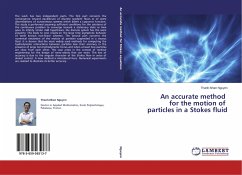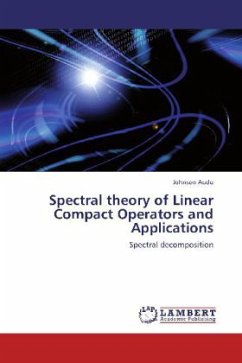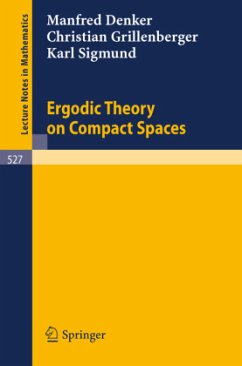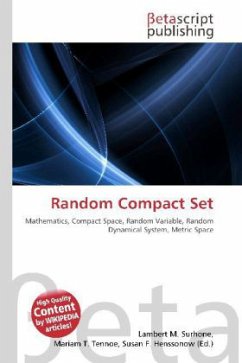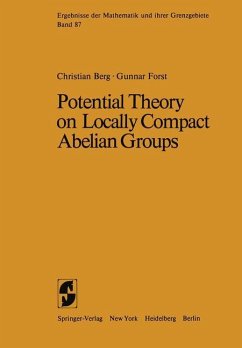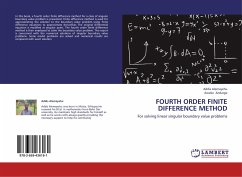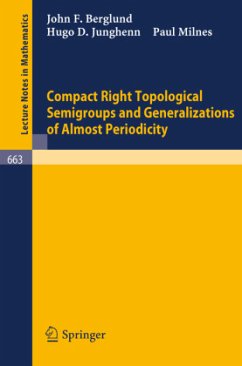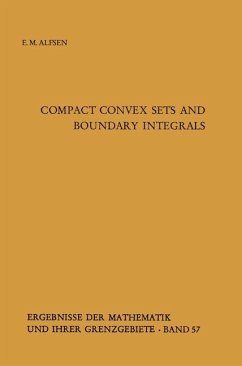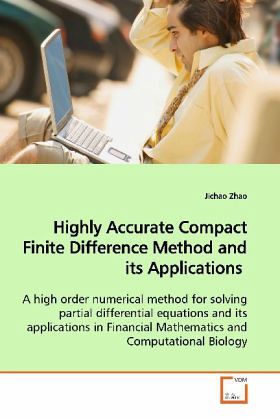
Highly Accurate Compact Finite Difference Method and its Applications
A high order numerical method for solving partial differential equations and its applications in Financial Mathematics and Computational Biology
Versandkostenfrei!
Versandfertig in 6-10 Tagen
45,99 €
inkl. MwSt.

PAYBACK Punkte
23 °P sammeln!
This book talks about the symbolic generation offinite difference schemes, especially so-calledcompact finite difference schemes, and theirnumerical applications to elliptic equations,integro-differential equations, the American optionpricing problem, and cardiac tissue models.We take as a base Corless and Rokicki s 1995 work onautomatic generation of finite difference formulaeand numerical integration formulae of univariate andbivariate problems. We then extend this methodologyto any dimension. The new Maple routine FINDIF allowsfor automatic, symbolic discretization of variousfinite differen...
This book talks about the symbolic generation of
finite difference schemes, especially so-called
compact finite difference schemes, and their
numerical applications to elliptic equations,
integro-differential equations, the American option
pricing problem, and cardiac tissue models.
We take as a base Corless and Rokicki s 1995 work on
automatic generation of finite difference formulae
and numerical integration formulae of univariate and
bivariate problems. We then extend this methodology
to any dimension. The new Maple routine FINDIF allows
for automatic, symbolic discretization of various
finite difference formulae, integration formulae, and
computes formulae for truncation errors.
Compact finite difference schemes are given for
boundary value problems and elliptic partial
differential equations. Compact finite difference
methods are also used to solve efficiently
integro-differential equations (IDE s). Furthermore,
we apply the method to solve the famous American
option pricing problem and simulate the action
potential propagation through two dimensional cardiac
tissues. All simulation results demonstrate the
compact finite difference method is a promising
approach.
finite difference schemes, especially so-called
compact finite difference schemes, and their
numerical applications to elliptic equations,
integro-differential equations, the American option
pricing problem, and cardiac tissue models.
We take as a base Corless and Rokicki s 1995 work on
automatic generation of finite difference formulae
and numerical integration formulae of univariate and
bivariate problems. We then extend this methodology
to any dimension. The new Maple routine FINDIF allows
for automatic, symbolic discretization of various
finite difference formulae, integration formulae, and
computes formulae for truncation errors.
Compact finite difference schemes are given for
boundary value problems and elliptic partial
differential equations. Compact finite difference
methods are also used to solve efficiently
integro-differential equations (IDE s). Furthermore,
we apply the method to solve the famous American
option pricing problem and simulate the action
potential propagation through two dimensional cardiac
tissues. All simulation results demonstrate the
compact finite difference method is a promising
approach.



